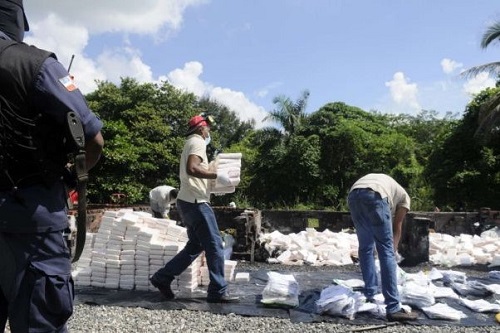Reuters photo
By
Ricardo Swire
The United States recently disclosed its new Aid Policy governing Caribbean engagement. On Wednesday June 21, 2017 the “Caribbean 202: A Multi-Year Strategy to Increase the Security, Prosperity and Well-Being of The People of the United States and the Caribbean” was publicly heralded.
In 2016 the island group represented US$4.6 billion of America’s trade surplus. Fourteen million US tourists visited the tropical archipelago, while eleven thousand and forty-two Caribbean students studied at colleges and universities across the US.
The reworded engagement Plan establishes State Department and US Agency for International Development (USAID) priorities related to security, diplomacy, prosperity, energy, education and health. The official document also introduces innovative drug trafficking counteractions. Caribbean 202: A Multi-Year Strategy to Increase the Security, Prosperity and Well-Being of The People of the United States and the Caribbean mandates strengthened partnerships between governments and civil society, plus modernization of local crime monitoring entities.
America’s Department of Justice (DOJ) noted the main objective is to share threat information with Caribbean islands. The aid Policy targets dismantling trafficking networks, confronting organized crime and enhancing maritime security. In March 2017 US Coast Guard (USCG) resources intercepted one point five metric tons of cocaine, during counter-narcotics operations in the US Virgin Islands and Puerto Rico.
Venezuelan traffickers, based on the Dominican Republic (DR), have started substitution of employed Colombian drug mules, who routinely travel on commercial airlines or crew go-fast boats. Modern intelligence data calculates four of five such cocaine laden watercraft, enroute to DR shores, are now fully staffed by Venezuelans. America’s Drug Enforcement Administration’s (DEA) 2016 National Drug Threat Assessment categorized DR transnational criminal organizations as “a viable threat to the US drug market.” The Caribbean transit point has the capability to handle one hundred and thirty metric tons of cocaine yearly.
US Caribbean 202: A Multi-Year Strategy to Increase the Security, Prosperity and Well-Being of The People of the United States and the Caribbean broadcasts support for territorial law enforcement and border-control agencies, Defense Forces and Regional Security headquarters. Effective maritime counter-narcotics tactics continue to be the major focus. In February 2017 USCG personnel interdicted four point two metric tons of cocaine in waters off Suriname’s north coast. On June 2, 2017 one point one metric tons of cocaine worth US$32 million, transported by DR traffickers, was seized by law enforcement in PR’s south coast waters.
On June 4, 2017 Caribbean maritime law enforcement personnel, directed by shared real-time intelligence, confiscated seventy-five kilos of cocaine dispatched from Guyana and Suriname. Sections of the US Multi-Year Strategy cover training, equipment, institutional building programs and technical assistance to the Island group. The State Department proposes to explore establishment of diplomatic and consular stations on Eastern Caribbean islands without permanent US diplomatic missions. The Caribbean diaspora in America utilized to promote this new US Caribbean 202 policy.
Ricardo Swire
Ricardo Swire is the Principal Consultant at R-L-H Security Consultants & Business Support Services and writes on a number of important issues.



No Comments Yet!
You can be first to comment this post!